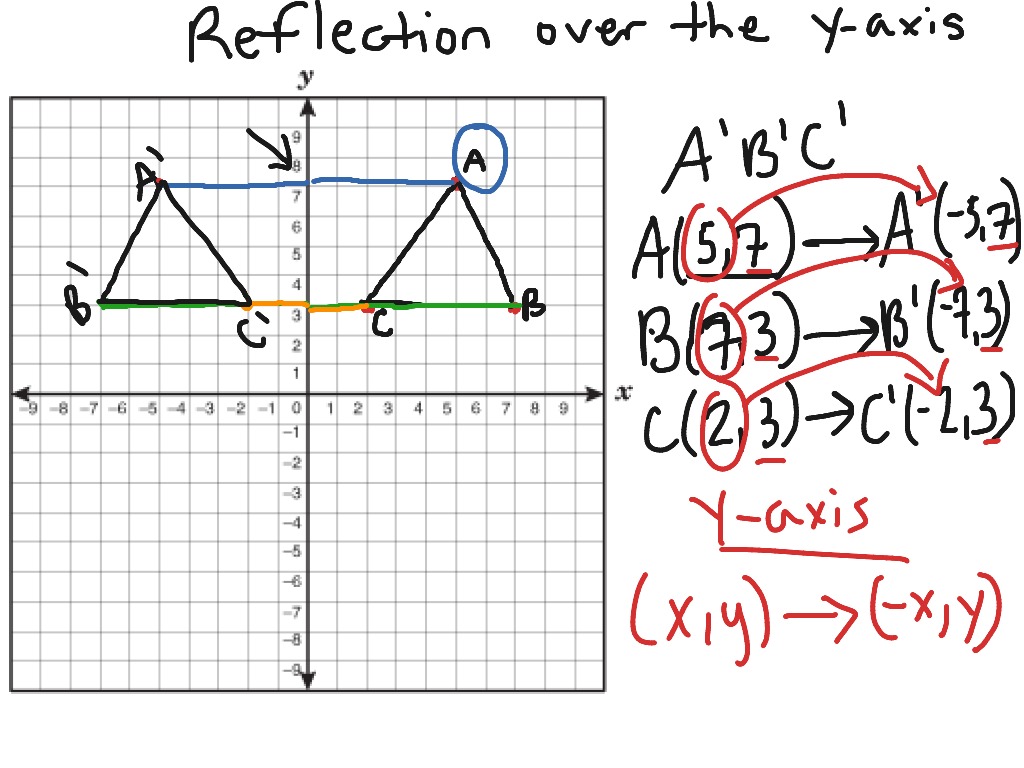

The cookie is used to store the user consent for the cookies in the category "Performance". This cookie is set by GDPR Cookie Consent plugin. The cookie is used to store the user consent for the cookies in the category "Other. The cookies is used to store the user consent for the cookies in the category "Necessary".

The cookie is set by GDPR cookie consent to record the user consent for the cookies in the category "Functional". The cookie is used to store the user consent for the cookies in the category "Analytics". even though rotating 90 degrees is not the same as reflecting about the y-axis,when you reflect again about the x-axis, it becomes the same as reflecting an. These cookies ensure basic functionalities and security features of the website, anonymously. Necessary cookies are absolutely essential for the website to function properly. ∴ The reflection of point(5, -3) is (5, 9). Here the coordinates of x will be the same.

Making the output negative reflects the graph over. What is the reflection of the point (- 5 3 in the y-axis?ĭetailed Solution In this figure we can see the Reflection of point(5, – 3) in the line y = 3 is (5, 9) as the distance between the point and the line is 6 unit so the mirror image will also be 6 unit above the line. We can also reflect the graph of a function over the x-axis (y 0), the y-axis(x 0), or the line y x. Just like you stand in front of a mirror your distance remains the same as your image distance, anything behind the mirror is counted in negatives so the x value remains the same but the sign is changed. Reflection of Q(-3, 5) over the y-axis is just the image of the point Q. What is the reflection of 3 5 over the y-axis? What is the image of 4 5 by taking y axis as a mirror?Įxplanation: The mirror image of the point A(4,5) on the y-axis is A'(-4,5). Reflection in the line y = 0 i.e., in the x-axis. We will discuss here about reflection of a point in the x-axis. When the mirror line is the x-axis we change each (x,y) into (x,y). Thus the reflection of (2, 3) across the Y-axis is (-2, 3). Learn about reflection in mathematics: every point is the same distance. To find the reflection, we need to cross the y axis which would be x-3.

What is the reflection of 2/3 across the Y axis?Ģ Answers By Expert Tutors When you reflect across the Y-axis, the X coordinate changes sign whereas the Y coordinate stays the same. If we look the location of the point on the graph, it is located at x3, y4. The rule for a reflection over the y -axis is (x,y)→(−x,y). If the negative sign belongs to the x, then the graph will flip about the y-axis.How do you find the reflection over the y axis? If the negative sign belongs to the y, then the graph will flip about the x-axis. The original object is called the pre-image, and the reflection. Remember Reflections: They appear like opposites A reflection can be done across the y-axis by folding or flipping an object over the y axis. Example: y = | –x| will flip the function about the y-axis If the negative sign belongs to the x-value the graph will reflect about the y-axis. In this example, flipping the original function across the y-axis is identical to the original graph (so it looks like nothing happened). Example: y = –|x| will flip the function about the x-axis If the negative sign belongs to the y-value the graph will reflect about the x-axis.ĭo you see how the negative sign is on the inside of the function… affecting the x-value of the function? When you apply a negative to each x-coordinate of each point (-x,y), the graph flips across the y-axis. When you reflect a point across the y-axis, the y-coordinate remains the same, but the x-coordinate is transformed into its opposite (its sign is changed). Sometimes the line of symmetry will be a random line or it can be represented by the x.
#Reflection over y axis how to
Question: What does a negative do to a graph? Answer: Multiplying a function by a negative sign creates a reflection: y = –f(x) or y = f( –x)įLIPS FUNCTIONS ABOUT THE X-AXIS y = –f(x)ĭo you see how the negative sign is on the outside of the function… affecting the y-value of the function? When you apply a negative to each y-coordinate of each point (x,-y), the graph flips across the x-axis. Learn how to reflect points and a figure over a line of symmetry.


 0 kommentar(er)
0 kommentar(er)
